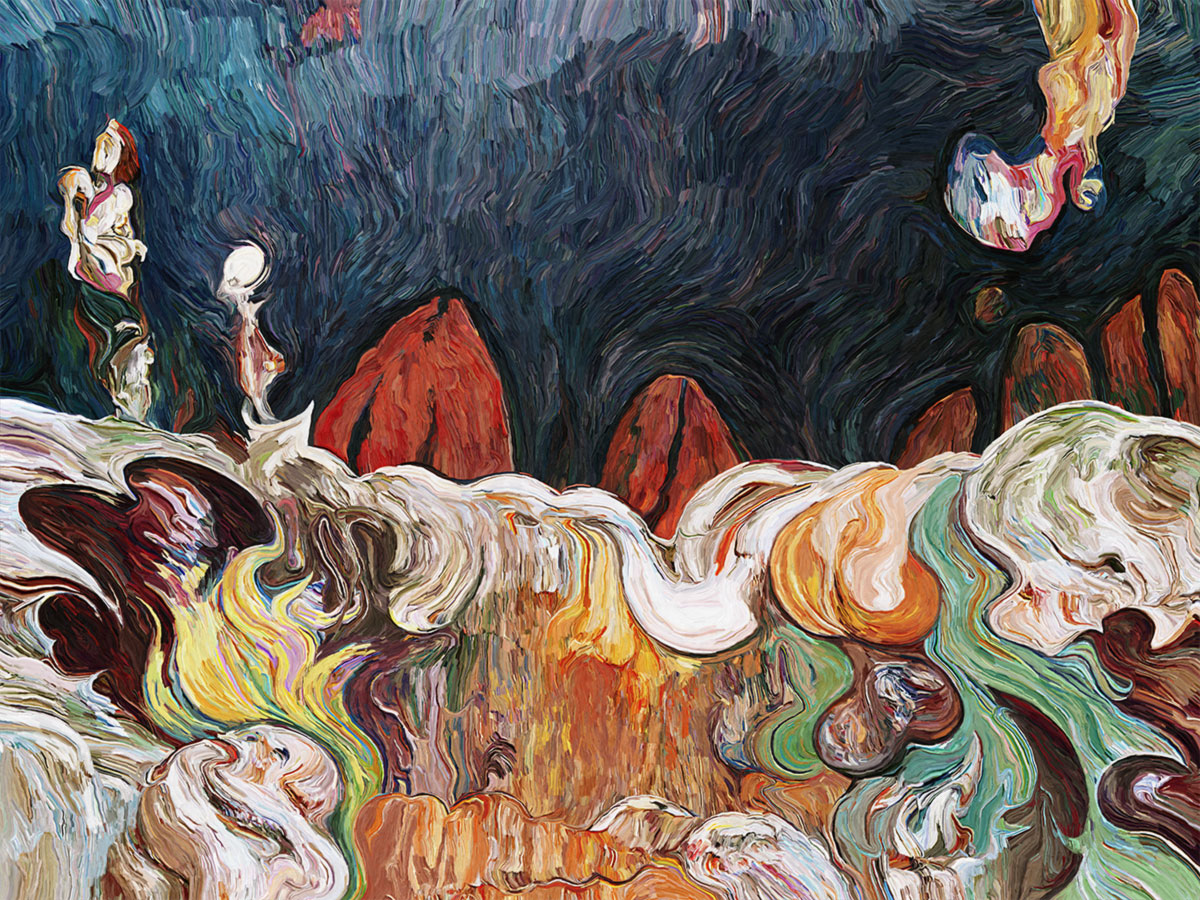
I just completed this image to my satisfaction. Like so many of my pieces, it started as an experiment. The idea was to make a non-representational image with all the qualities of being representational: foreground, background, modelling, and shading. There are figures, recesses, protuberances, open space, geographic and architectural elements. All the building-blocks of reality, in a painting, but without any recognizable forms, and it’s digital.
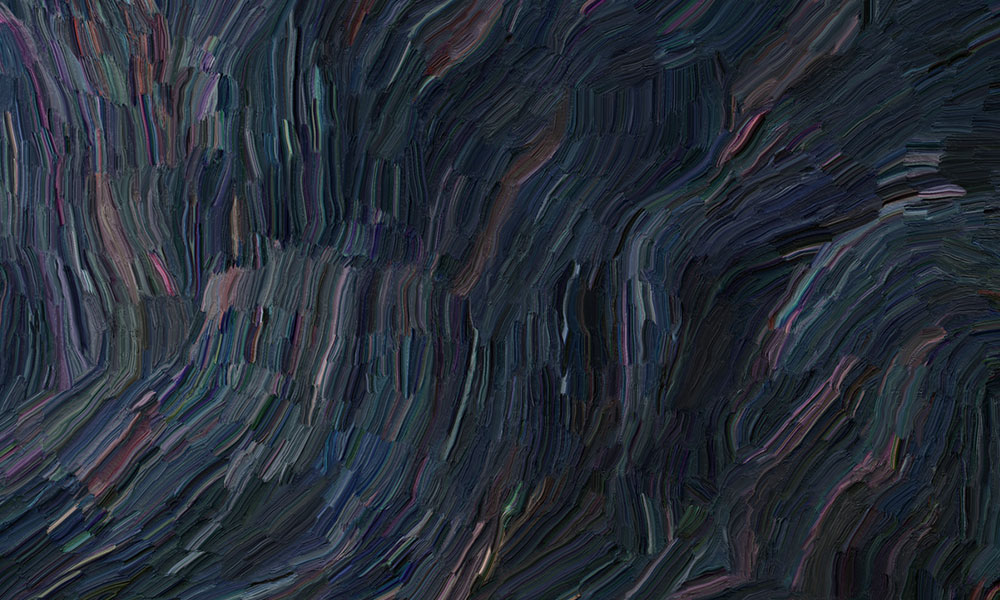
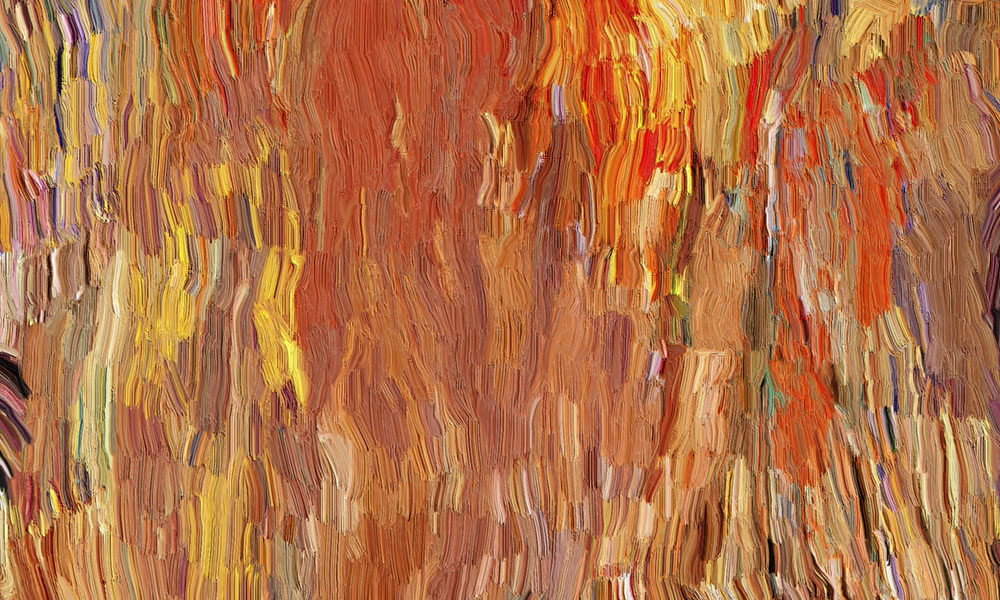
I also wanted to render it in a rich, thick, painterly style. Each stroke is articulated individually using a drawing tablet, and having a painting background I feel like I’m painting when I’m doing this. It’s a technique I developed and have honed over the last 7-8 years. Here I’ve gone a bit further to create a bas-relief underlying the impasto paint strokes, which is more apparent in the close ups. In fact, this image is so large that it can only be fully taken in as a large scale print (even I haven’t had the opportunity to see it this way). The full sized image is 50 times bigger than the one you see here, and can be printed magazine cover quality at 40 inches wide, which means it’s suitable for a gallery or museum. This also indicates that you can’t see all the detail and the whole image at the same time on a monitor, and neither could I while working on it (I had to work in sections). But you can get the overall effect.
Below are some details at “actual pixel size”.
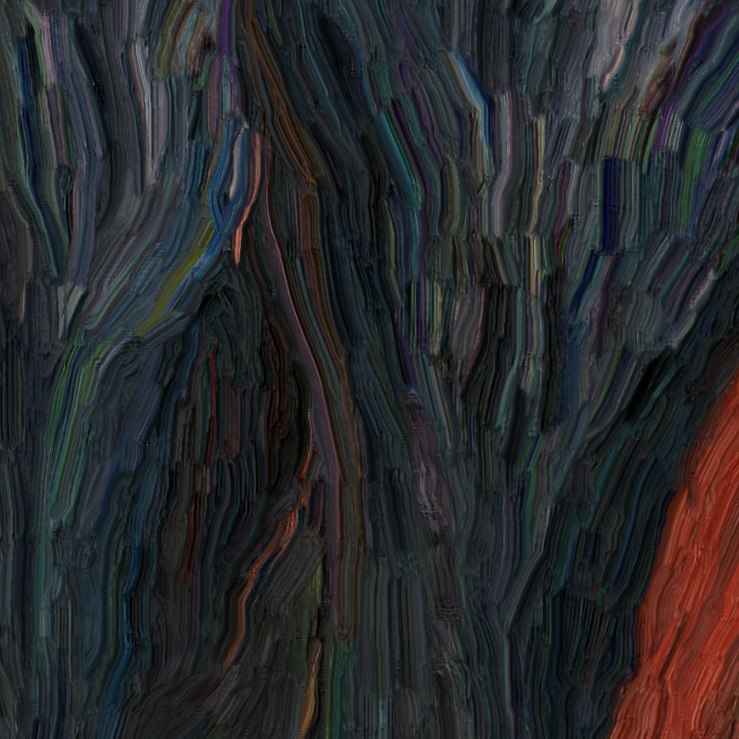
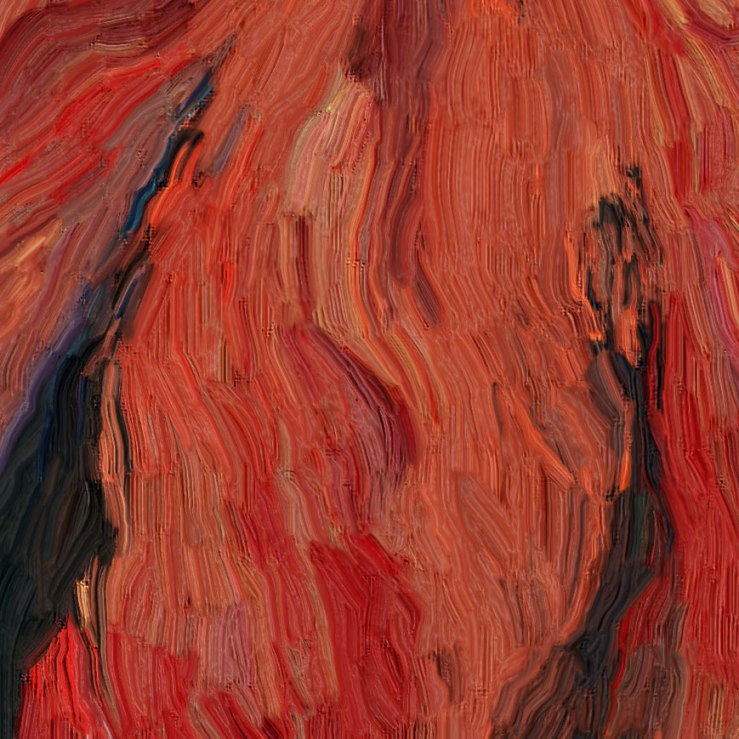
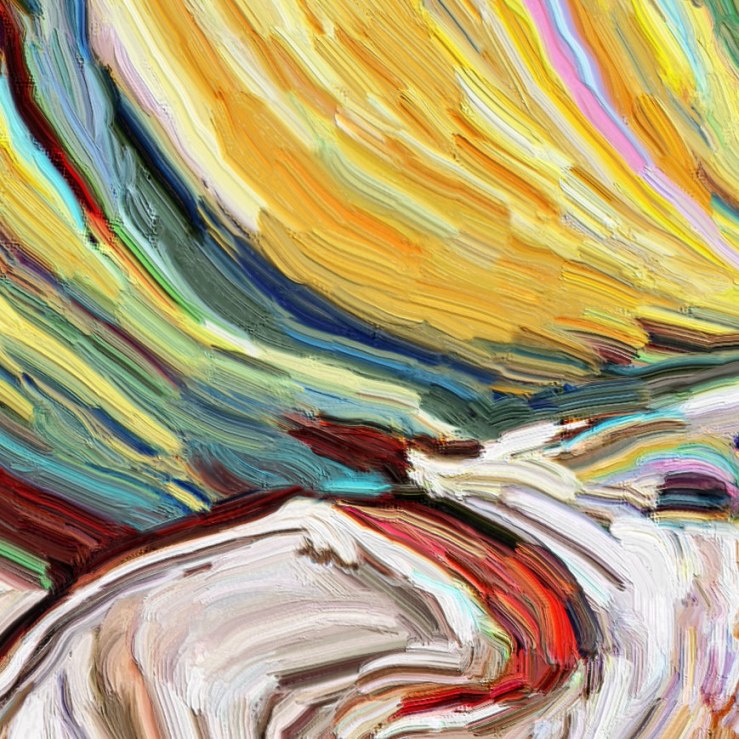


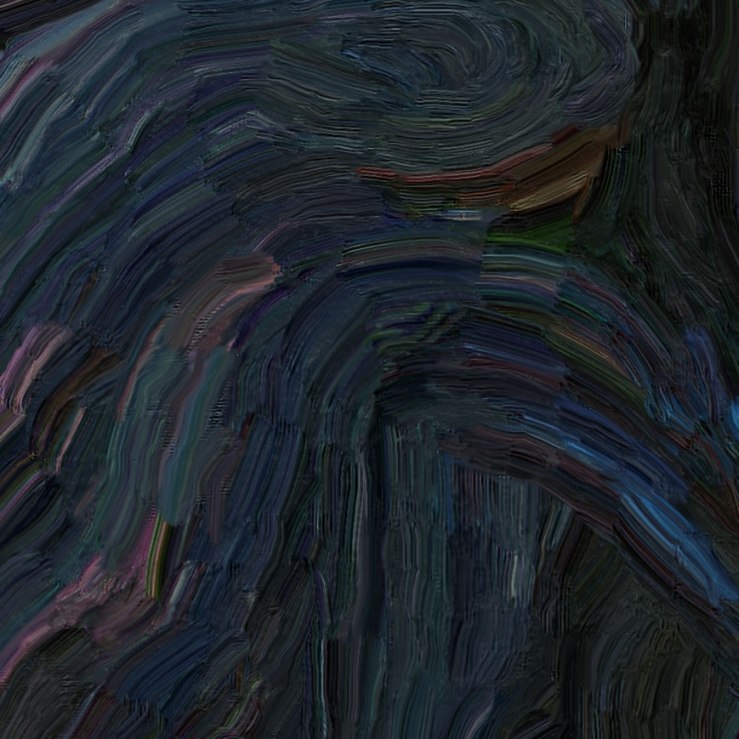
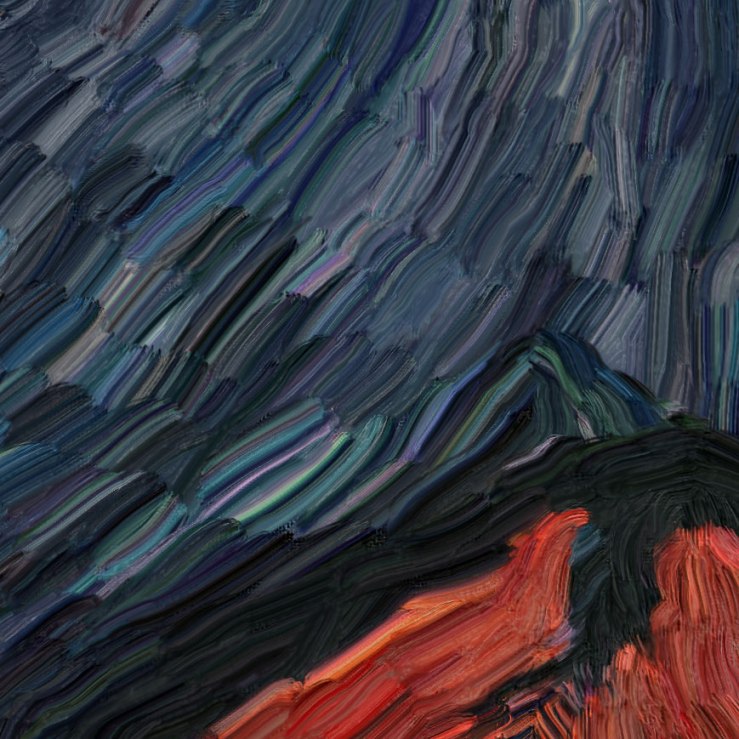
My process is probably a lot more involved and organic than one might imagine. I didn’t have a preconceived idea of the final image, in which case I’d just be executing something rather than constantly creating at the same time, which is a more satisfying process. The whole image evolves, and then in the final stages I polish it. You can see several stages of the process in the animation below. Incidentally, I have more than 20 versions of this image. I periodically save the file I’m working on under a new name so I don’t risk ruining what I’d done so far.
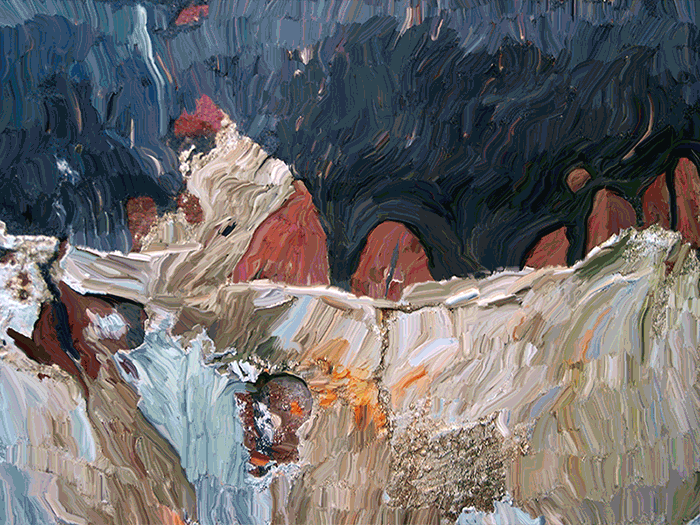
If you’re thinking the image looks like a Surrealist, abstract, Van Gogh… that’s about right. There are also shades of Hundertwasser, Yves Tanguy, Francis Bacon, and Joan MIro. It might be obvious to someone who’s had a Modern Art History course that the artist has studied a lot of paintings. But there are hints of science fiction (including something vaguely Giger-esque about the figure that appears to be hanging upside down in the upper right), a swell as a shroomy psychedelic feel. Like music, this is intended to evoke sensations and relations without actually delineating any of them precisely.
Some influences
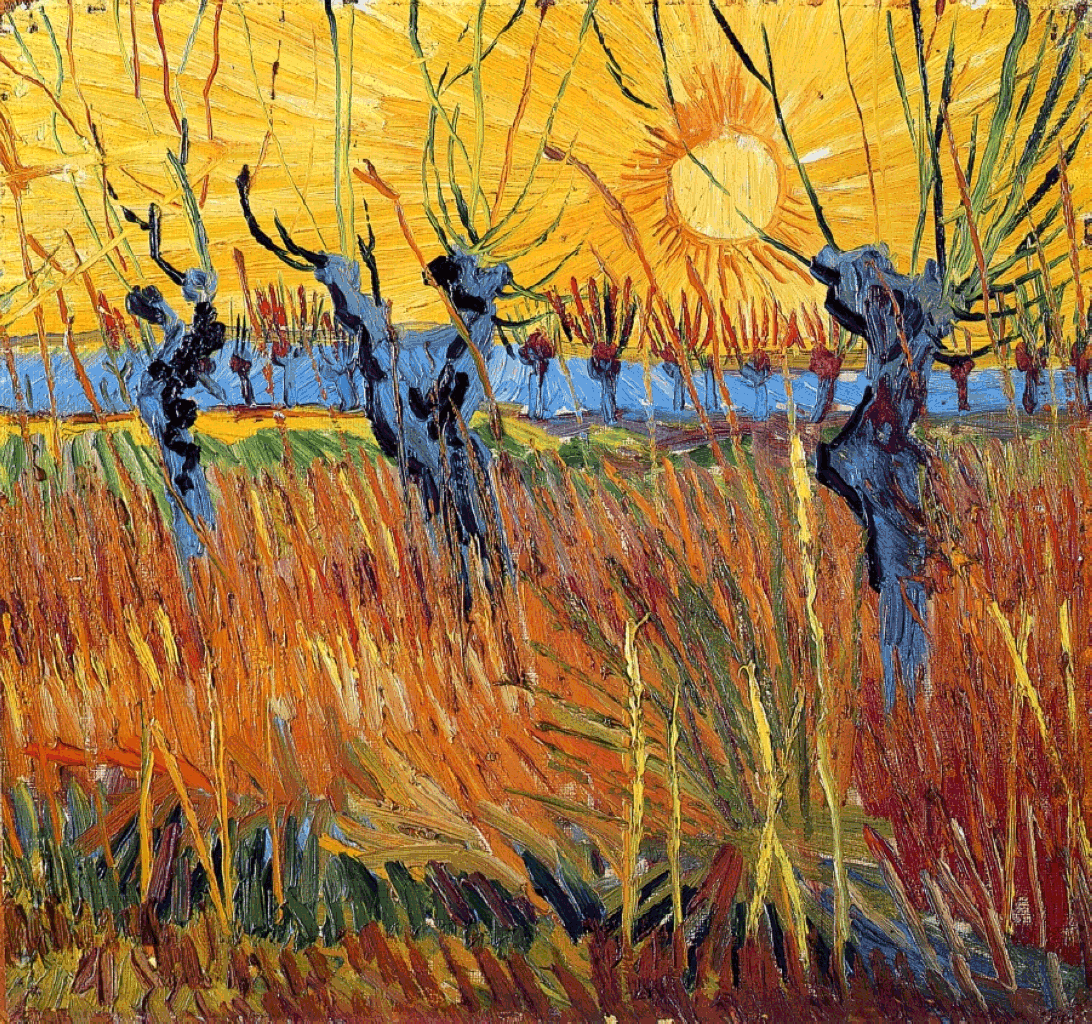
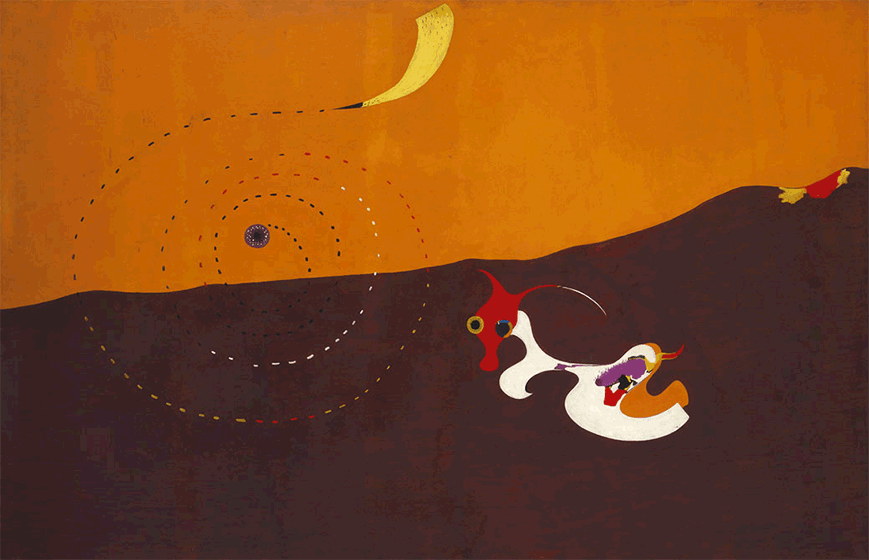


So, you might be thinking, “Why are your painterly influences all from over 50 years ago,” and “Why are you doing this digitally?” There are contemporary painters that I admire, but when it comes to technique, it’s a little like asking someone why they list Jimi Hendrix as their main guitar influence as opposed to subsequent players. It’s just because the subsequent guitarists were inspired by him, and one would do better to learn from the master than the proteges. But it’s also because “fine art” has drifted away from the primacy of the image, and when I was in art school we were encouraged to do anything but make meaningful imagery in the traditional sense. That was for hopelessly backwards and stunted artists. We heard that it had all been painted before, and the camera displaced drawing and painting as a means of visually representing reality. For me, the situations was something like wanting to make rock music, going to music school, and discovering it was considered taboo to make any kind of song, let alone rock. But I still believe that visual art revolves around imagery which is intrinsically interesting and meaningful, and I’m moved by the challenge of making something new within that tradition.
As to why I “paint” digitally, as opposed to using conventional mediums, well, on a practical level it’s a lot cheaper and the results are easily reproducible. The biggest impediment would be that it’s not really seen as possible to do well, but I’ve found ways around that. For me, I see almost all work in reproduction to begin with, so whether it was originally created with paint or by moving pixels around on a computer isn’t as important as the final effect. When I was 18 I worked in a print shop making posters and banners, and when I didn’t have work to do I experimented with using the print press to make abstractions. At the same time I was buying old Art in America magazines at a local used books store, and experimenting with making my own paintings (including with spray-paint). But I realized that the paintings I was admiring in the magazines were reproductions, and thus no more than ink dots on paper. It occurred to me that it might be much more direct to manipulate the ink on the paper directly: essentially to manipulate the means of reproduction.
Nowadays, we see most of our art online. And so I’m doing the same thing as I thought of when I was 18. Rather than make a painting, photograph it, and then reproduce it as pixels online, I work directly in pixels. Further, working with a computer allows infinite editing and opens possibilities prior artists never had.
See gallery with the images of this piece…
.


Love the closeups, and that you included examples of your influences. The closeup of the yellow strokes is my favorite. Perhaps it fits my current mood. Nonetheless, it’s amazing that you are able to create texture and depth using your digital tablet, because if you didn’t tell us, we’d just assume it was a closeup of an oil or acrylic painting. Mindscape 1, eh? Does that mean you have a Mindscape 2 in the works?
LikeLike
I’ll possibly cycle through doing representational and non-representational pieces. I may do another one, but it’s now what I have planned next or for the one after that.
LikeLike
This is awesome. You nailed the thick, painterly style you were going for too. Love it.
LikeLike
Thanks Sian. Glad you dig it! Ah, better when another painter appreciates the painting texture.
LikeLike
Whaddya mean it’s not representational?
It’s obviously the view when you’ve turned around just in time to see the huge backwash that’s about to chunder you after it bounced off the rocky point behind you. It’s already got the poor bastard in the upper right corner.
The guy on the left with the beard and pointy ears has managed to get a ride but the poor mashed-up bugger in the left lower foreground is a goner. His ghost is already popping out of the wave above him.
You’re as bad as that guy Rorschach who keeps denying what’s in all those filthy pictures he draws.
I would have put a ‘like’ on this but with my super slow connection I can’t get the page to load enough for the button to come up.
LikeLike
Nice description! I’ll have to look at it in that particular light. Might have to lighten some of my extraneous gif animations and whatnot to make my blog more accessible to people with slow connections (which I also have).
LikeLike
Maybe I should rename it “wipe out!”
LikeLike
Yeah, the laugh from that “Surfaris” song seems to fit it well.
LikeLike
mindblowing
LikeLike
Thanks. Glad you dig it.
LikeLike
I’m a big fan of Van Gogh. I can see a similarity in the way you use paint and colour.Its a very good skill you have there. Hope you have all the success you deserve.
LikeLike
Vang Gogh never gets old. Glad you like my work, and thanks for the encouragement.
LikeLike
had a play, hope you don’t mind
I like your mindscape
LikeLike
I meddle with other people’s images so much, I can hardly complain when someone does it to one of mine. Glad you had fun with it, and like the image.
LikeLike